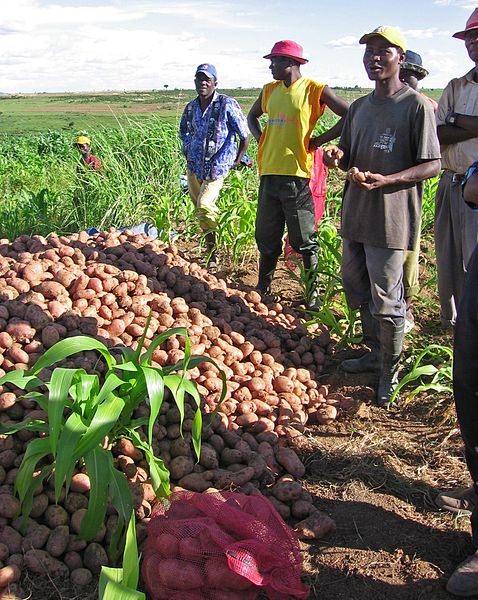In Angola, more and better-quality data is required to improve crop suitability assessments over large extensions of arable land to ensure sustainable food and income security. For example, environmental data on soil texture, soil water storage capacity, vegetation growth, terrain slopes, rainfall and air temperature are key to develop reliable crop suitability assessments. These datasets are available from state-of-the-art satellite-based products and machine learning observations (de Boer, 2016; Funk et al., 2015; Hengl et al., 2014, 2017). The benefit of these data products is that data can be obtained for any province, municipality, or farm in Angola. On top of that, data can be shown in maps to easily visualize spatial variation and identify the most suitable location and area to grow desired crops. Land-crop suitability maps are obtained by calculating a weighted average of the environmental variables that influence crop growth (e.g. rainfall, air temperature, soil water storage capacity), providing an integrated and complete assessment on where to plant. Also, potential crop yields are determined for desired cropping seasons using the FAO AquaCrop model to provide more information about potential income.
Irrigated agriculture in Angola has been developed in commercial farms using mainly central pivot and drip irrigation systems. The installation of new irrigation systems is foreseen in large extensions of land over 5000 hectares. Irrigated agriculture results in higher crop yields and allows higher incomes to farmers. However, commercial farms must invest in high energy supply to operate irrigation systems with water pumping stations. The challenge for irrigation system operators is to know exactly when and how much to irrigate during the cropping season. If better information about irrigation volumes and intervals are provided a significal reduction in energy costs could be achieved. The objective is to predict irrigation demand volumes during the cropping season and provide a user-friendly decision tool to irrigation operators. To achieve this, weather forecasts, remote sensing, and the SPHY model will be used.

